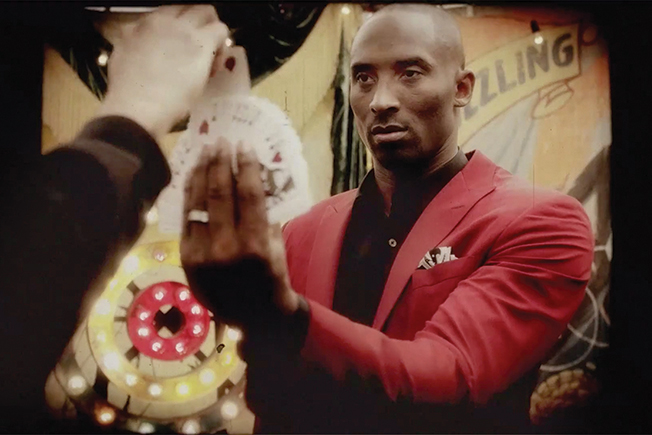Be among trailblazing marketing pros at Brandweek this September 23–26 in Phoenix, Arizona. Experience incredible networking, insightful sessions and a boost of inspiration at ADWEEK’s ultimate brand event. Register by May 13 to save 35%.
Recognizing there is life after the :30, brands earlier this year began experimenting with different video lengths to showcase their products and connect with consumers. Now, in short order, the focus is shifting to new video formats—everything from the short animated GIF, to the six-second Vine, to long-form video and even livestreaming broadcasts through platforms like Periscope. Brand marketers are starting to see they can be effective at any unit length if the creative is compelling.

Stacy Minero,
Nike, for example, is a brand that consistently pushes the limits with video. It has become proficient at deploying the right video format to connect emotionally with viewers. Nike has used looping GIFs to promote its Snkrs app, and launched a 12-second video dubbed "The World's Fastest Commercial" featuring Kobe Bryant and David Blaine. Earlier this month it launched a two-minute video to support the launch of the Jordan Super.Fly 4 sneaker. The video already has 35,000 retweets, proving that engaging content can drive social scale.
Here are six video marketing mindsets to embrace:
Front-load excitement: Let's face it, the connected world is cluttered. To cut through, brands should focus on creating powerful content that captures viewers' attentions early on. There are only about three to five seconds to connect with a viewer before they decide to watch your video or move on to endless other online distractions. A recent study Twitter worked on with Dentsu Aegis Network showed videos that feature people in the opening moments are up to two times as likely to drive consumers to view. The key takeaway: Don't romance your reveal. Spotlight top talent and highlight the heart of your message early on to earn consumer attention in the first frames.
GIFs that keep on giving: New video formats like GIFs can appear daunting, but they're actually one of the easiest ways to effectively distribute video and tap into major cultural moments. We're seeing brands slice and dice long-form videos to create hypnotic, shareable GIFs that often go viral. Major League Baseball pioneered the technique of GIF-based excitement extension after major moments in games. Brands are following suit. A recent video from Macy's featuring superstar Thalía spawned a series of shareable GIFs that highlighted the video's best moments. Samsung's Galaxy S6 commercial was also transformed into multiple GIFs, designed to highlight the product in an unexpectedly fun way.
Audio-agnostic experimentation: Today, video plays automatically on many social platforms, making consuming content virtually friction-free. These videos play without sound until a user initiates it, and this silent format is something that brands should consider. Of course, music and dialogue are important creative devices, so eliminating them altogether would be a mistake. But, it's important to consider alternative tools—such as visual cues or text overlays—to drive ad recall and brand awareness. For example, a recent video from L'Oréal Paris brings a beauty tutorial to life with the help of instructions via text.
Creator collaborations: Creative influencers are proving to be a fun, highly effective outlet for brands to connect with various audiences—often millennials. Last summer, HP launched their #BendTheRules campaign, marking the first Vine-powered spot to air on national TV. Earlier this year, Twitter acquired Niche, a platform that helps social media creators connect with brands to create authentic content at scale. From a trend perspective, we're seeing brands leverage the power of multiple creators vs. focusing on singular talent. This enables brands to tap into a variety of personalities to tell their story, and fanbases to aggregate audience. For instance, Verizon partnered with Vine influencers Robby Ayala and Sara Hopkins to launch the Droid Turbo. By leveraging creator collaborations, Verizon tapped into the deep relationship (and understanding) each creator has with a unique audience.
Brands as live broadcasters: Twitter also acquired Periscope, an app that enables users to livestream whatever is happening in their world, at any given moment. Brands are taking to Periscope to offer unfiltered content in ways we haven't seen before. In April, Target used Periscope to tease its highly anticipated Lilly Pulitzer line, an effort that helped fuel massive consumer demand in a matter of days. And spirits brand St. Germain used Periscope to reveal a branded burlesque show, reminiscent of 1920s Paris, featuring New Girl celeb @HannahSimone. This brought the brand personality to life in an unexpected and authentic way.
Content with a cause: At Cannes, much of the video-based marketing that received the highest accolades stood for a movement—far beyond selling a product or service. Always' #LikeAGirl exposed how ingrained stereotypes impact young girls' self-esteem while Dove's #SpeakBeautiful ignited conversation about body confidence by inviting women to celebrate what they love about themselves. Recently, AT&T created a gut-wrenching video (#ItCanWait) showing how distracted driving can have irreversible impact. Dick's Sporting Goods put marketing muscle behind a campaign called #SportsMatter to help save after-school sports programs across America.
Video, twinned with social and mobile, will continue to scale and redefine media; marketers and brands that freely experiment with length, format and story will repeat the benefit. Seeing is believing.
Stacy Minero (@sminero) is head of content planning at Twitter and was an Adweek Media All-Star in 2013.
This story first appeared in the Aug. 17 issue of Adweek magazine. Click here to subscribe.








